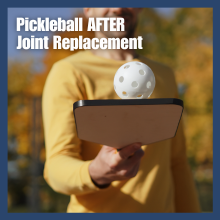What Is Leg Length Discrepancy (LLD)
Cory Calendine, MD, Orthpaedic Surgeon
Some research indicates that 40–70% of people have one leg longer than the other, referred to as leg length discrepancy (LLD). The greater the difference in length between legs, the more likely it is that a person will experience symptoms.
Causes of Leg Length Discrepancy
Causes of leg length discrepancy influence treatment options and can be categorized into (2) basic categories: Functional and Structural
Functional Leg Length Discrepancy
Functional LLD means the actual leg bones are equal in length but there appears to be a difference due to an issue soft tissues and other body parts including the hips, pelvis or feet.
Functional LLD can be caused by abnormal hip alignment, joint arthritis and neuromuscular conditions that affect posture and joint alignment.
Structural Leg Length Discrepancy
Structural LLD occurs when there is an actual length discrepancy of the bones of the leg (femur or tibia). Structural differences can be present at birth or can be caused by bone or growth plate injuries, bone diseases, or bone tumors.
Symptoms of Leg Length Discrepancy
Leg length differences as small as 2 cm can cause the pelvis to compensate for the imbalance and produce symptoms. The most common symptoms of leg length discrepancy are abnormal or limping gait, pain in the lower back, hips or feet and increased lower extremity fatigue.
Home test you can perform:
1. Remove shoes and socks.
2. Lie on your back on the floor and keep legs together.
3. Have a friend or family member to place their palms of hip bones, placing one hand on each hip.
4. The helper should gently move the hips from side to side for approximately 60 seconds, helping to relax the surrounding muscles.
5. Ask the helper to check the alignment of the ankle bones (comparing the position of the hard knot of bone on the inside of each ankle). If the ankle bones are not aligned, it could represent leg length discrepancy.
Physician Diagnosis of LLD
Methods used by physicians to diagnose LLD include physical examination, gait analysis, measurement with having patient stand on blocks of various heights to level hips, xrays of the pelvis/legs and sometimes CT scan of the pelvis and legs.
Treatment Options for LLD
Treatment for a discrepancy depends upon the severity. After diagnosing leg length discrepancy and determining the cause, treatments plans can include physical therapy (with specific exercises to correct areas of imbalance/muscle weakness), shoe lifts, gait training and even surgery.
When leg length discrepancy is secondary to another disease process, such as the cartilage wear-and-tear of hip arthritis, treatment is often directed toward correcting the primary disease process.
Summary of Leg Length Discrepancy
It is relatively common to have one leg longer than the other. A leg length discrepancy may be functional or structural and may or may not cause symptoms.
If you feel that you may have leg length discrepancy (especially if associated with pain or gait problems), you should schedule an appointment with a orthopaedic specialist.
A physician can diagnose the condition and recommend appropriate treatments to prevent chronic, worsening symptoms.
Original Arthicle: One leg longer than the other: How to tell, and what to do








